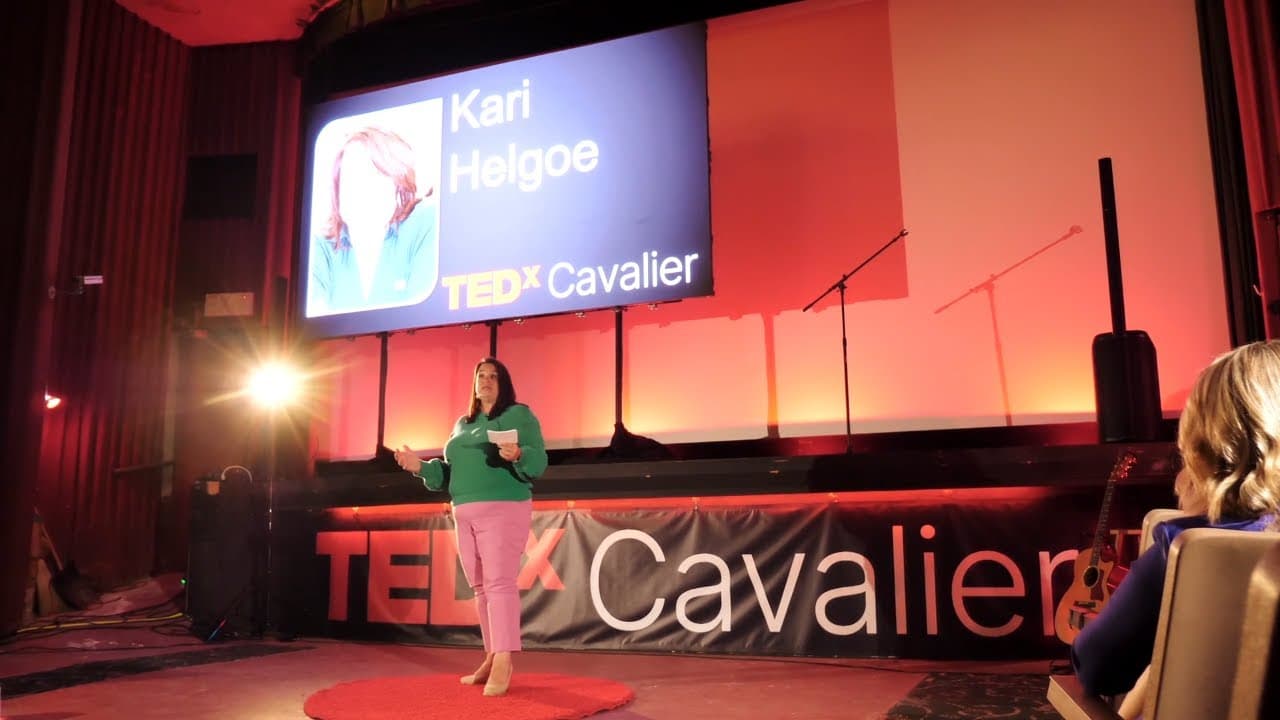Food and hunger in the heartland | Kari Helgoe | TEDxCavalier
09 Aug 2024 (over 1 year ago)

Food in Northeast North Dakota: A Cultural Tapestry
- Food has been a central part of life in Northeast North Dakota, bringing people together for generations.
- Early settlers from Iceland, Germany, and Scandinavia brought their own culinary traditions, which blended with the existing Chipawa culture.
- Food was essential for survival in the harsh early years and played a vital role in family celebrations, weddings, funerals, and holidays.
- Traditional dishes like ludifisk, skid, and spatzle were common, while modern adaptations like hot dish emerged, reflecting the region's agricultural diversity.
The Power of Food in Community
- Food fosters community and conversation, providing a safe space to share stories, memories, and experiences.
- Food offers comfort and support during times of joy and sorrow, with meals often shared during celebrations and times of grief.
- Food plays a significant role in team building and bonding, particularly in sports, where pre-game meals bring teams together.
- Food creates traditions and memories for families, with special occasions and everyday meals often associated with specific dishes.
- Food education connects generations, as elders teach younger generations how to prepare traditional foods, passing down history, stories, and cultural knowledge.
The Economic Impact of Food
- Beyond its nutritional value, food is essential for the local economy in Northeast North Dakota, with agriculture driving a significant portion of the region's economic activity.
- The area boasts a diverse agricultural landscape, producing potatoes, small grains, dry pulse foods, oil seeds, and Christmas trees.
- The agricultural industry is interconnected, encompassing seed and fertilizer sales, equipment, application methods, healthcare systems, insurance, community life, banking, and financial services.
- Farmers markets are becoming increasingly important, providing fresh food, especially during the summer months, and contributing to local economies.
- New technologies, such as greenhouses, hydroponics, and energy production, are making fresh food more accessible.
- Agritourism is emerging, with people interested in learning about food production, leading to opportunities for farmers to share their knowledge and experiences.
- Food tourism is a growing sector, with food blogs and foodies driving interest in local culinary experiences.
Food as a Tool for Community Building
- Community feeds are used for building community spirit, cultural celebrations, and fundraising for local infrastructure needs, emergencies, and families in need.
The Importance of Food for Health and Well-being
- Food provides nourishment for the body, contributing to physical health and well-being.
- The USDA dietary guidelines, using the MyPlate model, emphasize the importance of fruits, vegetables, whole grains, dairy products, and protein for optimal health.
- Gardening promotes physical activity and provides a sense of accomplishment, with various garden types catering to different needs and spaces.
- Food preservation techniques, such as canning, freezing, drying, pickling, and fermenting, allow people to extend the shelf life of food safely.
Addressing Food Insecurity
- Food insecurity is a significant issue, with many people lacking access to adequate food despite the abundance of food in the surrounding area.
- The USDA defines hunger as not having enough to eat on a daily basis or not knowing where the next meal will come from.
- In the United States, over 44 million people experience hunger or poverty, including 13 million children.
- In North Dakota, one in 18 people and one in three children experience hunger.
- The cost of a simple meal in North Dakota is $343.
- Hunger can be caused by various factors, including divorce, illness, job loss, and lack of transportation.
- In Pena County, North Dakota, there are several initiatives to address hunger, including a food pantry, a backpack program for school children, and grocery store vouchers.
- The food pantry provides up to six baskets of food per year to those in need, but its resources are limited.
- The backpack program provides food for children to take home, but it relies on donations and is not available during the summer.
- North Dakota faces food deserts, meaning there are areas without easy access to grocery stores.
- Walsh County, North Dakota, has implemented a program to distribute cheaper food through food lockers and bars.
- Hunger can be exacerbated by factors such as income restrictions, addiction, lack of transportation, and weather conditions.
Taking Action to Combat Hunger
- Individuals can make a difference in addressing hunger by volunteering, donating, and identifying unmet needs in their communities.
- The speaker emphasizes the importance of providing hot meals to those in need, as there are often limited options available.
- The speaker encourages viewers to consider how they can contribute to making food accessible to those experiencing hunger.
- Individuals may be experiencing hunger even if they are not receiving assistance.
- It is important to advocate for those experiencing hunger and educate communities about the hidden need.
- Hunger is not always caused by a lack of money, and solutions should address health and wellness.
- Simple and affordable food solutions can be implemented to address hunger.
- The speaker encourages viewers to consider how they can make food accessible and welcoming in their communities.